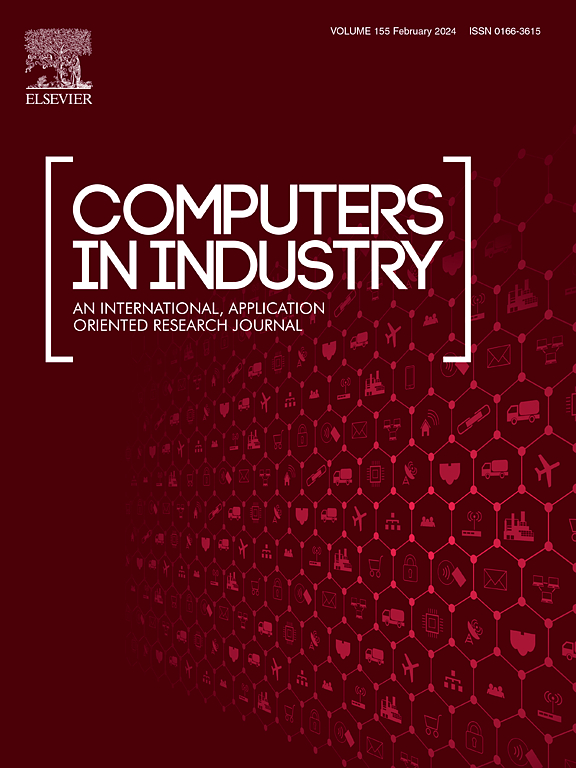Contribution to estimating the level of bearing degradation using a Multi-Branch Hidden Markov Model approach
IF 9.1
1区 计算机科学
Q1 COMPUTER SCIENCE, INTERDISCIPLINARY APPLICATIONS
引用次数: 0
Abstract
The degradation of industrial systems is a natural and often unavoidable process. Hidden Markov Models (HMMs) are used for state-based bearing degradation analysis. A challenge arises because bearings can deteriorate in multiple ways, depending on crack locations. To address this, a Multi-Branch Hidden Markov Model (MB-HMM) was developed to handle multiple deteriorations. However, MB-HMM primarily uses simulated data where deterioration is known in advance. In contrast, real-world sensors collect data with uncertainties, potentially causing false alarms and impacting the First Predicting Time (FPT). We used the FEMTO-bearing dataset, which includes continuous monitoring until failure, with unknown fault locations and varying degradation levels. This study presents a comprehensive preprocessing framework and employs the Extended Multi-Branch HMM (EMB-HMM). Our experimental analysis shows that the proposed strategy significantly enhances the Signal-to-Noise Ratio (SNR). The active branch is defined based on prior and posterior probabilities, with the branch's prior probability and topology linked to the four fault frequencies of the bearing. The EMB-HMM outperforms other models in state prediction, featuring four branches and five hidden states. It improves state sequence accuracy, predicts degradation levels and FPT, and achieves zero false alarms for Fake Fault (FF).
对使用多分支隐马尔可夫模型方法估计轴承退化水平的贡献
工业系统的退化是一个自然的、往往是不可避免的过程。隐马尔可夫模型(hmm)用于基于状态的轴承退化分析。这是一个挑战,因为根据裂纹位置的不同,轴承会以多种方式恶化。为了解决这个问题,开发了一个多分支隐马尔可夫模型(MB-HMM)来处理多重退化。然而,MB-HMM主要使用预先知道劣化的模拟数据。相比之下,现实世界的传感器收集的数据具有不确定性,可能会导致误报并影响首次预测时间(FPT)。我们使用了包含femto的数据集,其中包括连续监测直到故障,故障位置未知,退化程度不同。本研究提出了一个综合的预处理框架,并采用了扩展多分支HMM (EMB-HMM)。实验分析表明,该策略显著提高了信噪比(SNR)。基于先验和后验概率定义活动支路,支路的先验概率和拓扑结构与轴承的四个故障频率相关联。EMB-HMM在状态预测方面优于其他模型,具有4个分支和5个隐藏状态。它提高了状态序列的准确性,预测退化水平和FPT,并实现了假故障(FF)的零误报。
本文章由计算机程序翻译,如有差异,请以英文原文为准。
求助全文
约1分钟内获得全文
求助全文
来源期刊

Computers in Industry
工程技术-计算机:跨学科应用
CiteScore
18.90
自引率
8.00%
发文量
152
审稿时长
22 days
期刊介绍:
The objective of Computers in Industry is to present original, high-quality, application-oriented research papers that:
• Illuminate emerging trends and possibilities in the utilization of Information and Communication Technology in industry;
• Establish connections or integrations across various technology domains within the expansive realm of computer applications for industry;
• Foster connections or integrations across diverse application areas of ICT in industry.
 求助内容:
求助内容: 应助结果提醒方式:
应助结果提醒方式:


